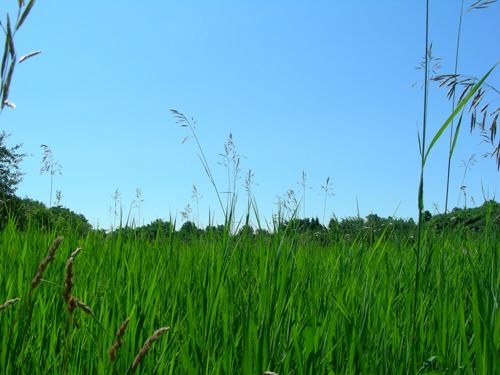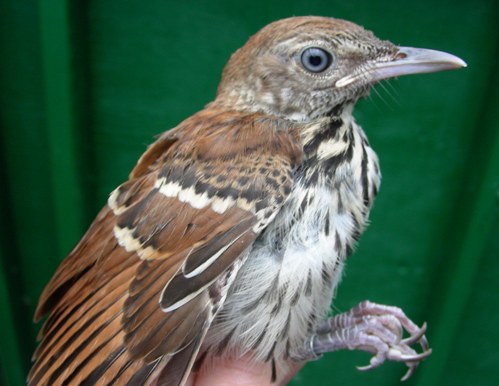Banders-in-charge:
Marie-Anne Hudson, Barbara Frei
Assistants: Sheldon Andrews, Sophie Cauchon, Gay Gruner, Lance Laviolette, Barbara MacDuff, Chris Murphy, André Pelletier
Notes: This summer has beat all records in terms of passing quickly – we blinked and it was fall! Our last census of the summer season was conducted on the 30th of July, yielding dozens of young birds from this year. Young ones began appearing in June, and we’ve had, in addition to the ones listed last month, records of fledgling Red-eyed Vireo. The average number of species seen during each visit ranged between 23 and 32, and the total number of species observed during the month of July was 45, a decrease from June and the 49 species from last July, but understandable due to fewer observation hours (and most of those were spent wrestling with vegetation and not paying terribly close attention to the birds flitting around).
The list of birds banded this month at MBO is a short one, and to be honest none of it was actually done at MBO-proper! The four Tree Swallows banded were out of a nest box along the Arboretum road. Apparently momma swallow decided that a kestrel box would be a great place to raise a family. In addition we banded five Eastern Bluebirds, but at the Royal Montreal Golf Course. We certainly hope to get a call from them next year when those babies come back to breed. We were also asked to band the young birds that were raised at Le Nichoir by its hard-working staff, so that they might be able to keep track of them once released, either by spotting them hanging around in groups by the feeders, acclimating to their new environment, or by band number returns from birds that were found dead or killed, or ideally of course recaptured alive and well much later at MBO or other observatories. They didn’t find their way into our table however, as they’re in captivity (well, for now anyway).
|
This month's
top 10
[last month’s rank in brackets]
|
#
individuals banded |
mean # individuals observed daily |
|
Eastern Bluebird (5) |
American Crow (20.8)
[8] |
|
Tree Swallow (4) |
European Starling (19) [-] |
|
|
American Goldfinch (13.6)
[2] |
|
|
Cliff Swallow (11.8)
[6] |
|
|
Common Grackle (10.2)
[-] |
|
|
Red-winged Blackbird
(10.2)
[1] |
|
|
Song Sparrow (8.8)
[7] |
|
|
American Robin (5)
[-] |
|
|
Common Yellowthroat (4.8) [10] |
|
|
Tree Swallow (4.8)
[4] |
|
The ten species most frequently observed this month were surprisingly different from last month’s, with three new species appearing on the list (flocks of young European Starling, Common Grackle and American Robin) and Red-winged Blackbird beginning its descent down the list as the adults pull their annual disappearance from MBO. Despite the differences between June and July, seven of last July’s top 10 species are again in this year's top 10, just like last year. Another way to look at it is the following species, the ‘usual suspects’, were seen during every single summer census: American Crow, House Wren, American Robin, Common Yellowthroat, Song Sparrow, Red-winged Blackbird, Common Grackle, and American Goldfinch.
Our hard-working volunteers deserve a massive thank you for taming the vegetation around the net lanes and census route, and making our first annual MBO BBQ a hugely delicious affair. The net lanes have never been clearer, and the treetops have been trimmed a little so they’re no longer overshadowing our nets. We’re very excited about the upcoming fall season (our fifth already!), and hope to see you all out there soon.
|

What a relaxing way to spend a few minutes: taking photos of swaying grass.
(Photo by Marie-Anne Hudson)
|


